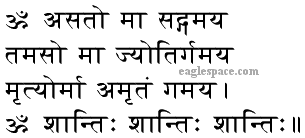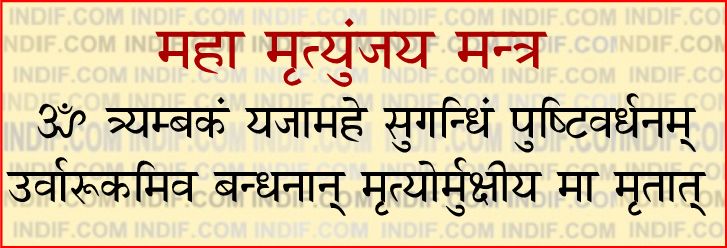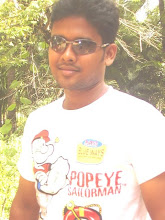asato ma sadgamaya
tamaso ma jyotirgamaya
mrtyorma amrtam gamaya
Lead me from the asat to the sat.
Lead me from darkness to light.
Lead me from death to immortality.
(Brhadaranyaka Upanishad ? I.iii.28)
This is true prayer?the seeker?s admission of his sense of limitedness and his heartfelt cry for assistance in transcendence. It is not a prayer for the things of the world. It is not a pray for food, shelter, health, partnership, riches, success, fame, glory or even for heaven1. One who recites these three mantras has realized that such things are full of holes, soaked in pain and, even in abundance, will forever leave him wanting. It is in this full understanding that one turns to this prayer. The essence of each of these three mantras is the same: "O, Guru, help me free myself from my sundry misunderstandings regarding myself, the universe and God and bless me with true knowledge."
The first mantra?asato ma sadgamaya?means, "Lead me from the asat to the sat." In fact, it is best to not translate sat (nor its negative counterpart asat) for, as with many Sanskrit words, sat has many meanings and not only are most of them applicable here, their deliberate combined import provides a depth that no one of them could hold independently. These co-applicable meanings include: existence, reality and truth. (Co-applicable meanings for asat being: non-existence, non-reality and untruth.)
We often speak of religion or philosophy as a search for Truth. But only in India?s philosophy of Advaita Vedanta has the concept of "truth" been so meticulously and successfully dissected. According to Advaita, for something to be considered true in the ultimate sense, it must be true not just at one given moment, but always be true?true in all three periods of time: the past, present and future. In fact, Advaita goes one step further. It says if something does not exist in all three periods of time that it does not truly exist, it is not ultimately real. Thus, truth, existence and reality are one and the same. That reality, Vedanta says, is what we call God.
The universe and its things are in a constant state of change. The planets are in constant motion, their positions in relation to each other and the other astral bodies are in continuous flux. The seasons similarly are ever-shifting. Scientifically, we can easily understand that our bodies (and the cells within them) come into existence, are born and then go through periods of growth, sustenance, deterioration and death. In fact these six modifications are part-and-parcel of everything in creation. On the level of emotions, we move back and forth between happiness, sorrow and anger. Even our intellectual convictions rarely stay fixed for very long. So, according to Vedanta, we cannot call this world ultimately real. It is not ultimately true. Ultimately, it does not exist. It seems real etc. but it is not. Such a thing is called asat.
The seeker giving voice to this prayer has come to understand the finite nature of all the objects of the world, and he wants the Guru to guide him from the asat to the sat. He is fed up with depending on things that are not real. Why? Because just as the sandcastle is always washed away by the tide, dependence on the asat always ends in pain. Sat is our True Self?the blissful consciousness that ever was, is and ever will be. Being beyond time, this consciousness can never be washed away by the time?s tides. In fact, sat is there as the essential part of all of the asat objects. It is a matter of separating the wheat from the chaff, as it were.
When speaking about the ultimate reality, Sages say it is of the nature of sat-cit-ananda: pure existence, pure consciousness and pure bliss.
The second mantra?tamaso ma jyotirgamaya?means "Lead me from darkness to light." When the Vedas refer to darkness and light, they mean ignorance and knowledge, respectfully. This is so because ignorance, like darkness, obscures true understanding. And in the same way that the only remedy for darkness is light, the only remedy for ignorance is knowledge. The knowledge spoken of here is again the knowledge of one?s true nature.
The final mantra?mrtyorma amrtam gamaya?means: "Lead me from death to immortality." This should not be taken as a prayer to live endless years in heaven or on earth. It is a prayer to the Guru for assistance in realizing the truth that "I was never born, nor can ever die, as I am not the body, mind and intellect, but the eternal, blissful consciousness that serves as the substratum of all creation."
It is important to remember that, with all these mantras, the leading is not a physical leading. The Atma is not something far away that we have to make a pilgrimage to, nor is it something we need to transform ourselves into. Atma means "self." We don?t need to transform our self into our self. Nor do we need to travel to it. We are it. The journey is a journey of knowledge. It is journey from what we misunderstand to be our self to what truly is our self. What the mantras really means is "Lead me to the understanding that I am not the limited body, mind and intellect, but am, was and always will be that eternal, absolute, blissful consciousness that serves as their substratum."
" Do not ask anything from God,
because God already knows your needs"
Asato ma sadgamay. As a human being my mind dissipates my actions. Dissipates. Is dissipated all the time. 'O Lord of life, O Lord who is witnessing my actions, I am being aware of you. You are within me. Lead me on the right path. That which is beneficial for me, that which does not hurt others, that which does not injure others. Lord lead me to the right path.'





